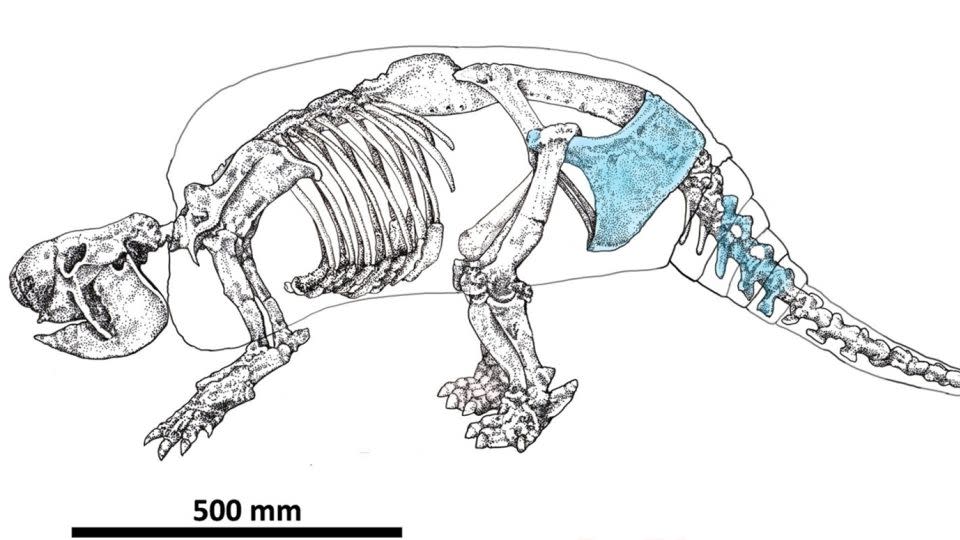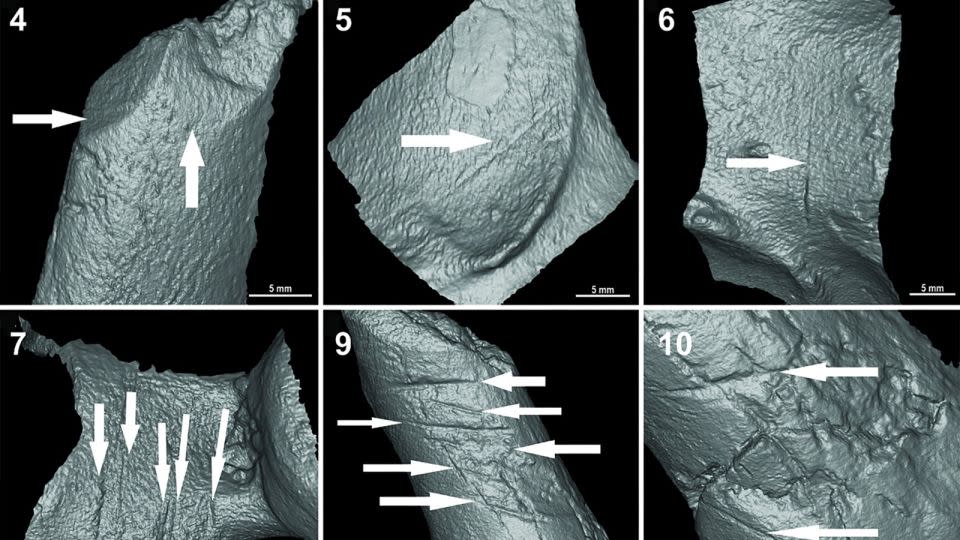Sign up for CNN’s Wonder Theory science newsletter. Explore the universe with news on fascinating discoveries, scientific advancements and more.
More than 20,000 years ago in what’s now Argentina, some of the earliest people in the Americas encountered and butchered a giant armadillo-like creature with stone tools, according to a new study.
The discovery, inferred from cut marks on the ice age creature’s fossilized remains, is significant because it adds to a flurry of recent finds that suggests the Americas were settled far earlier than archaeologists initially thought — perhaps more than 25,000 years ago.
“These animals are closely related to the still-living armadillos,” said study coauthor Miguel Delgado, a researcher at the National University of La Plata in Buenos Aires. The animals are known for their armored scales and ability to roll up into a ball when threatened.
“The specimen we found belongs to one of the smallest species (of an extinct type of armadillo called Neosclerocalyptus),” Delgado said, noting its weight was about 300 kilograms (660 pounds) and its length 180 centimeters (almost 6 feet), including the tail.
A bulldozer exposed the animal’s fossilized vertebrae and pelvis, uncovered along the banks of the Reconquista River near the city of Merlo in the Buenos Aires metropolitan area.
Radiocarbon dates from the bones and bivalve shells found in the same layer of sediment revealed the armadillo remains were between 20,811 and 21,090 years old, according to the study published Wednesday in the journal PLOS One.
The cuts weren’t immediately obvious, but the cleaning of the fossils revealed 32 linear marks. After careful analysis, the team ruled out that the marks were made by rodents, carnivores that might have preyed on the animals, or other factors such as trampling, Delgado said.

Instead, the team determined that the shape of the cut marks was consistent with those made by stone tools. The placement of the marks suggested the animals were butchered for their meat with a deliberate sequence of cuts that focused on dense areas of the armadillo’s flesh, according to the Delgado.
“The cut marks were not randomly distributed but focused on those skeletal elements that harbored large muscle packs like the pelvis and the tail,” he said.
The authors provided “convincing evidence” that people butchered this extinct armadillo 21,000 years ago, said paleoanthropologist Briana Pobiner, a research scientist at the Human Origins Program at the Smithsonian National Museum of Natural History in Washington, DC.
“The authors have done a solid job of demonstrating through qualitative and quantitative analyses that the cut marks on the armadillo fossils are most likely to have been made by humans,” said Pobiner, who wasn’t involved in the study, via email.
Earliest humans in the Americas
When and how early humans first migrated to North and South America, the last places to be peopled as humans left Africa and spread around the world, has long been debated by experts and remains poorly understood.
Current estimates for the first inhabitants range from 13,000 years ago to more than 20,000 years ago, but the earliest archaeological evidence for the region’s settlement is sparse and often controversial.
The discovery of fossilized footprints pressed into mud 21,000 to 23,000 years in New Mexico, described in a September 2021 study, is the most definitive of a string of recent evidence suggesting that the arrival of the first inhabitants was far earlier than many scientists had thought.


During that time, the planet was in the grip of the Last Glacial Maximum, a period 19,000 to 26,000 years ago when two massive ice sheets covered the northern third of North America, reaching as far south as what’s now New York City, Cincinnati and Des Moines, Iowa.
The ice sheets, and the cold temperatures brought on by the glacier masses, would have made a journey between Asia and Alaska — the most likely route — impossible during that time, meaning the people who made the footprints likely arrived much earlier.
Along with three perforated giant sloth bones found in Brazil that archaeologists believe humans used as pendants 25,000 to 27,000 years ago, the butchered armadillo bones suggest that humans were in South America a surprisingly long time ago.
The timing of when humans first settled across the Americas, then home to many now-extinct ice age creatures, has been a “hotly debated topic,” Delgado said.
“Until recently, the traditional model indicated that humans entered the continent 16,000 calendar years ago,” he said.
“Our results, in conjunction with other evidence, proposes a distinct scenario for the first human peopling of the American continent, that is, the most likely date for the first human entry occurred between 21,000 and 25,000 years ago or even before.”
For more CNN news and newsletters create an account at CNN.com
Source Agencies



